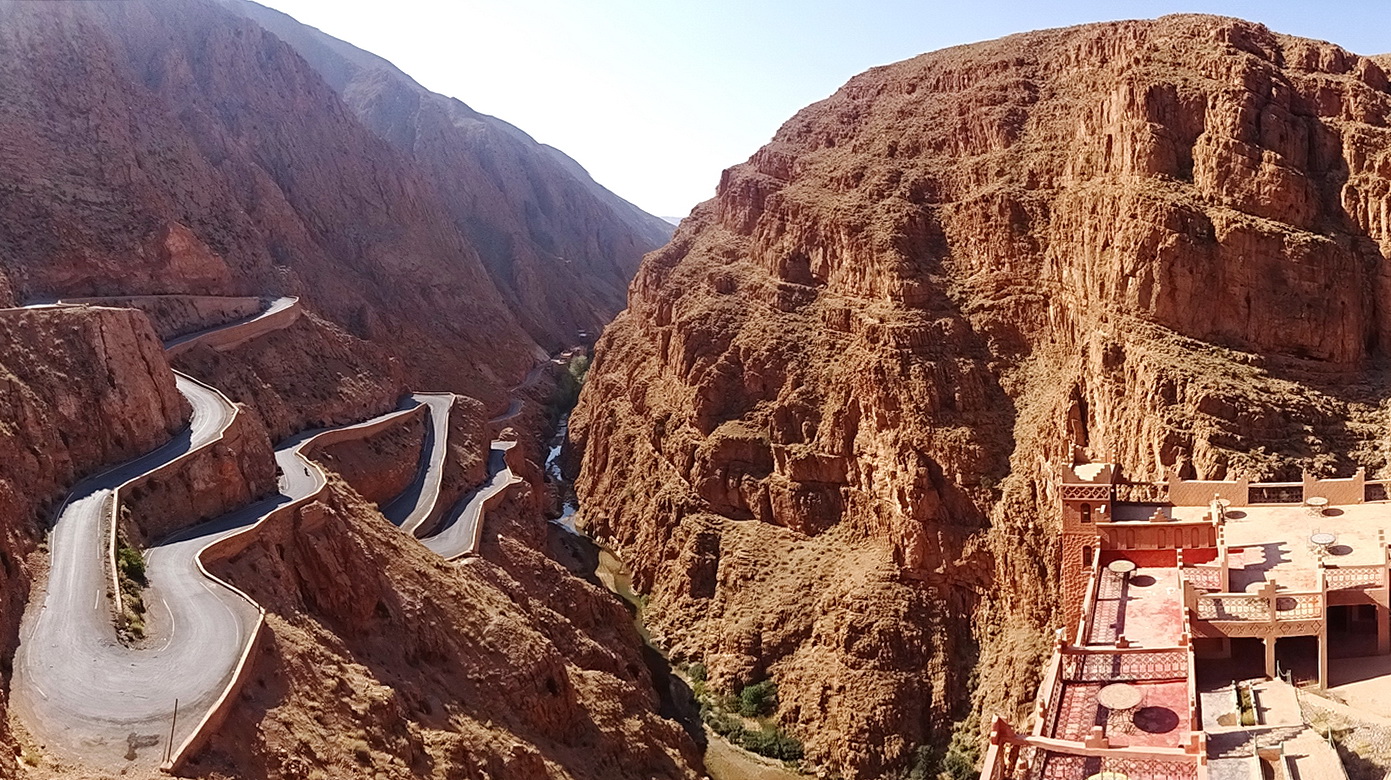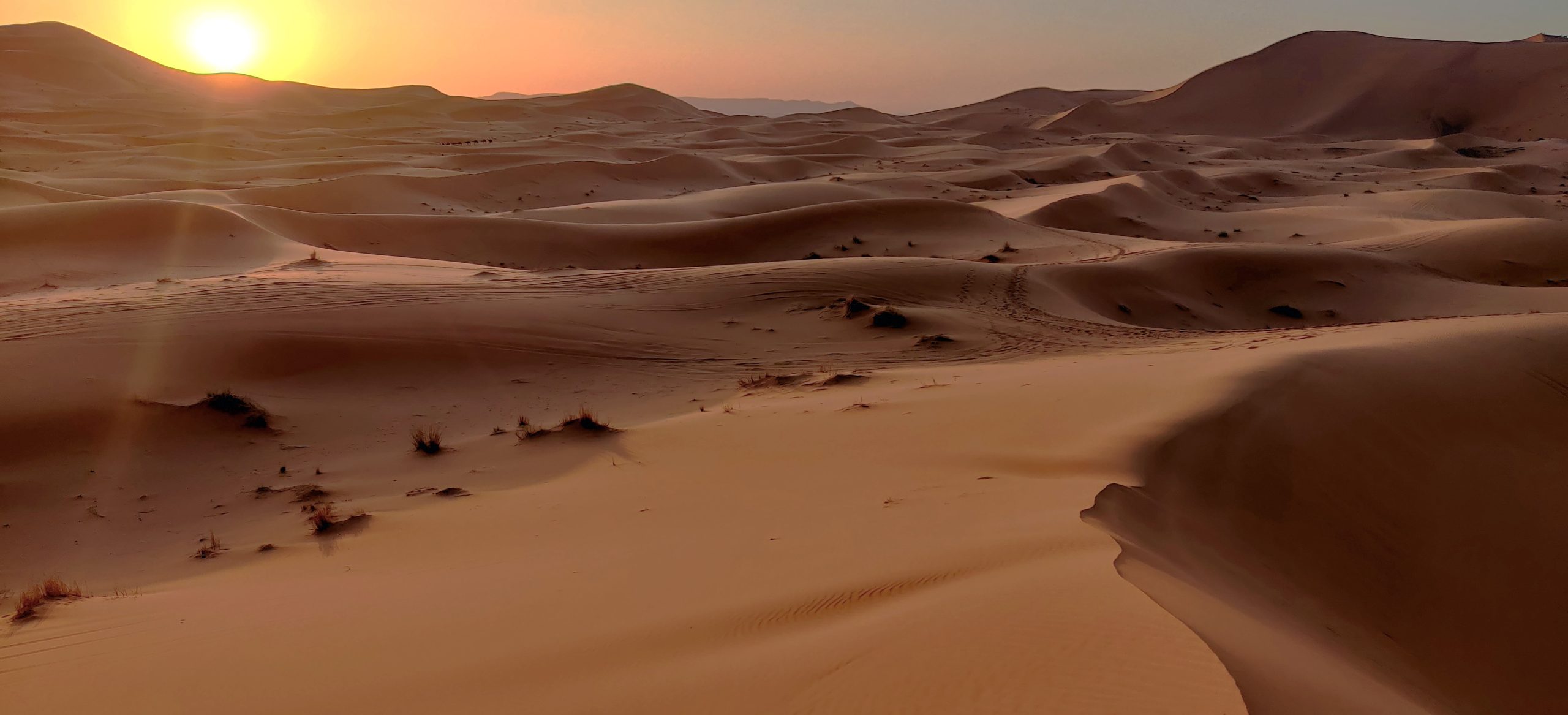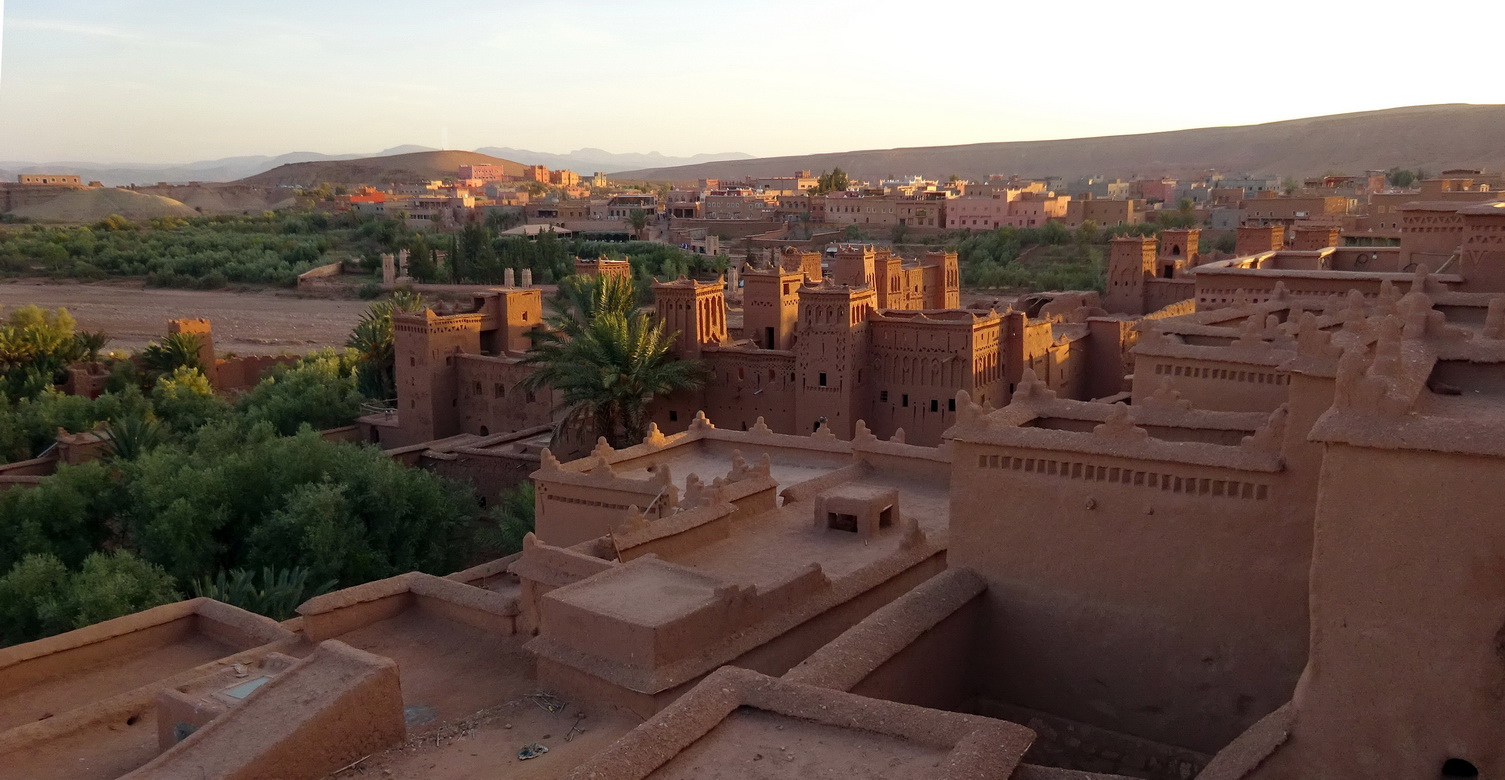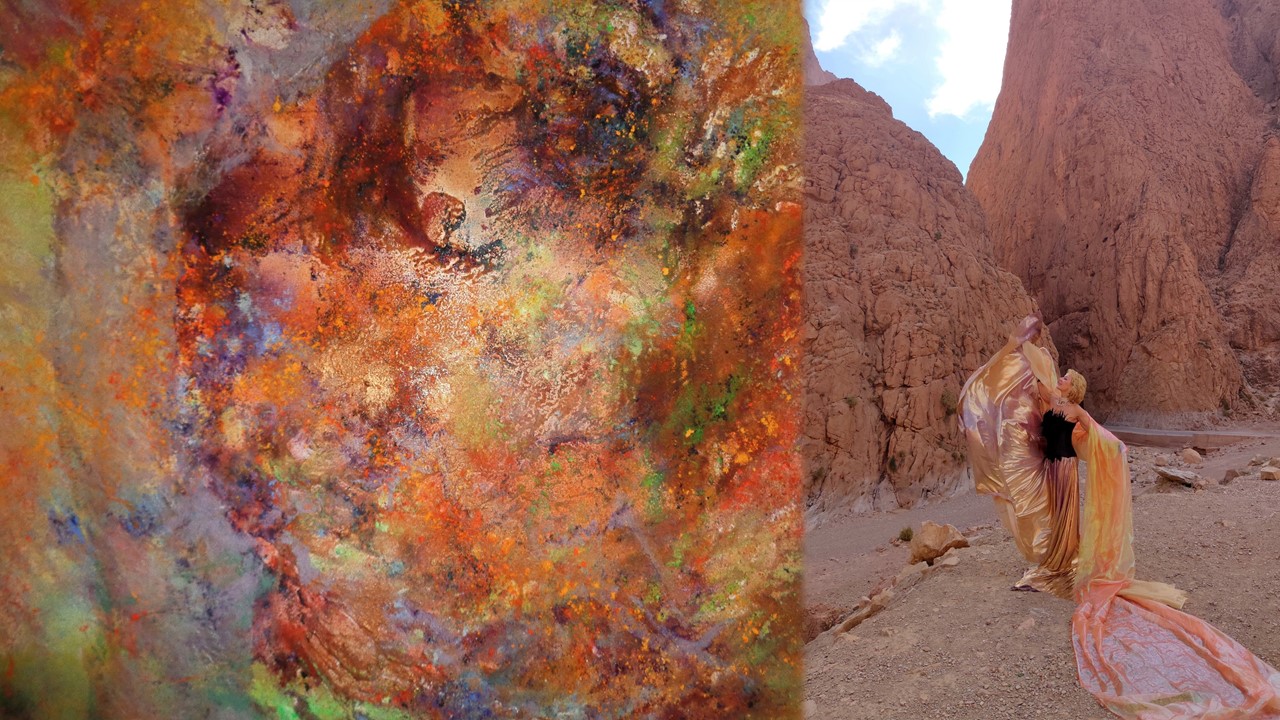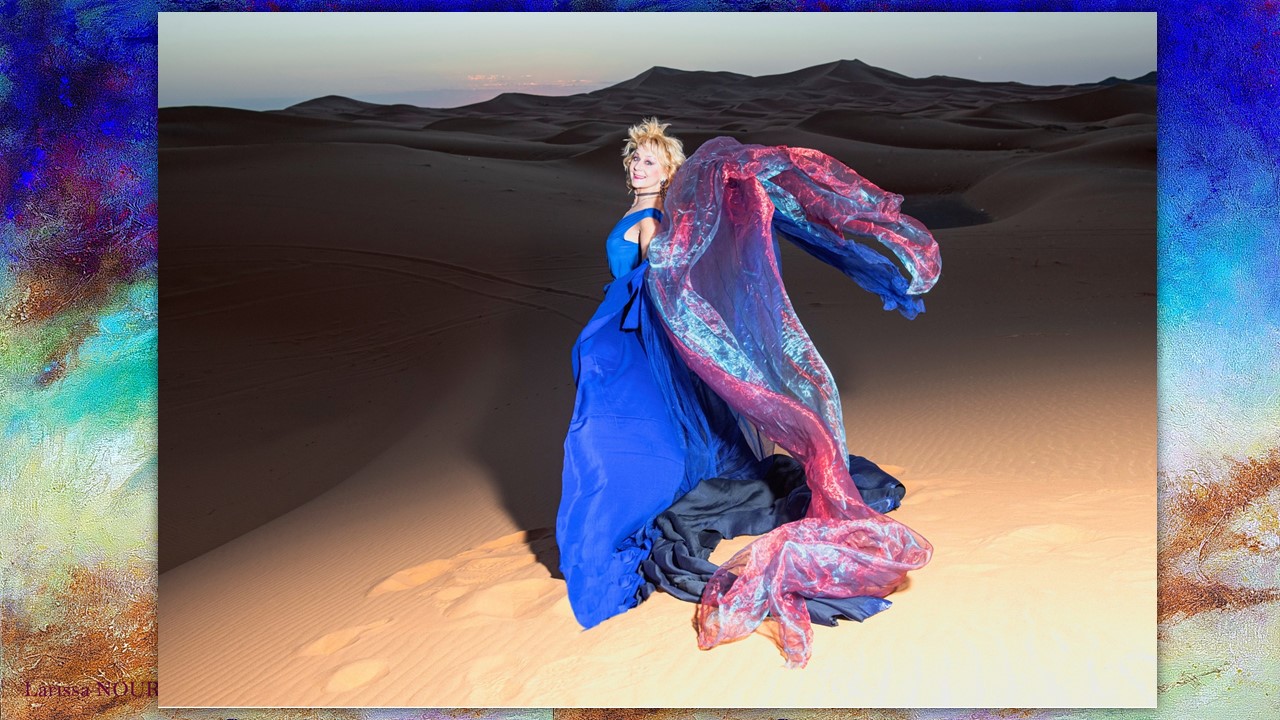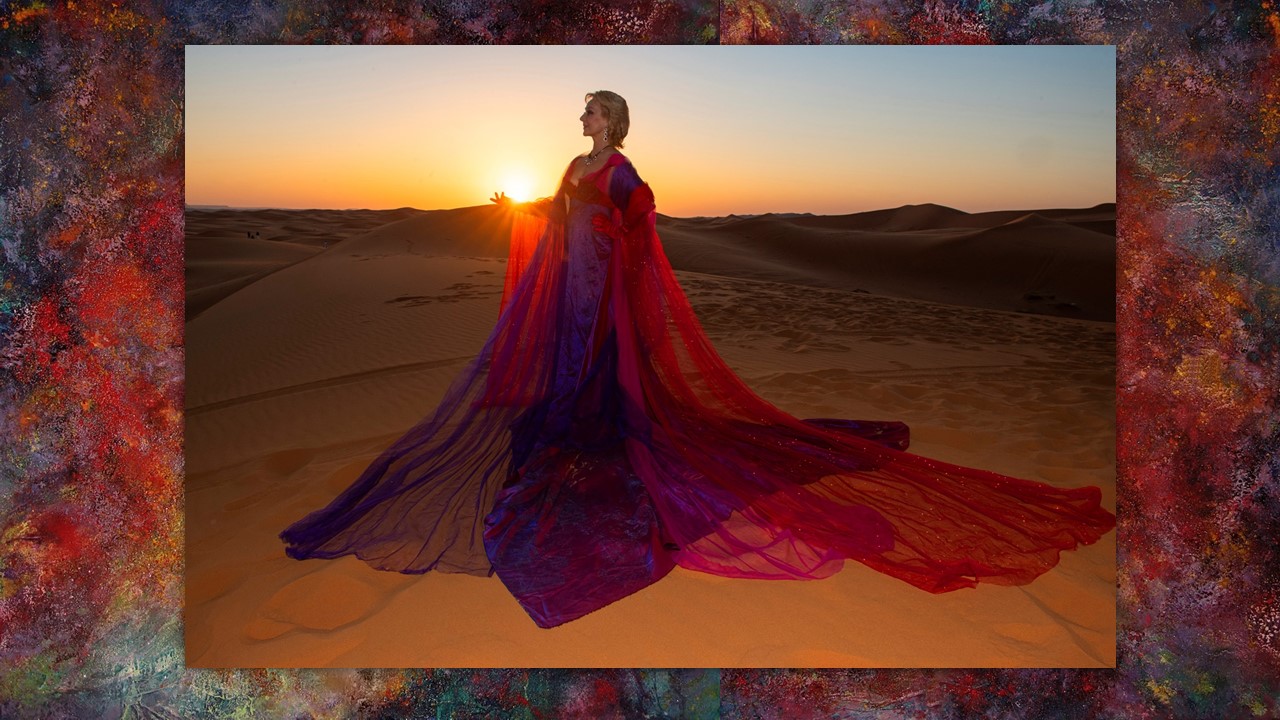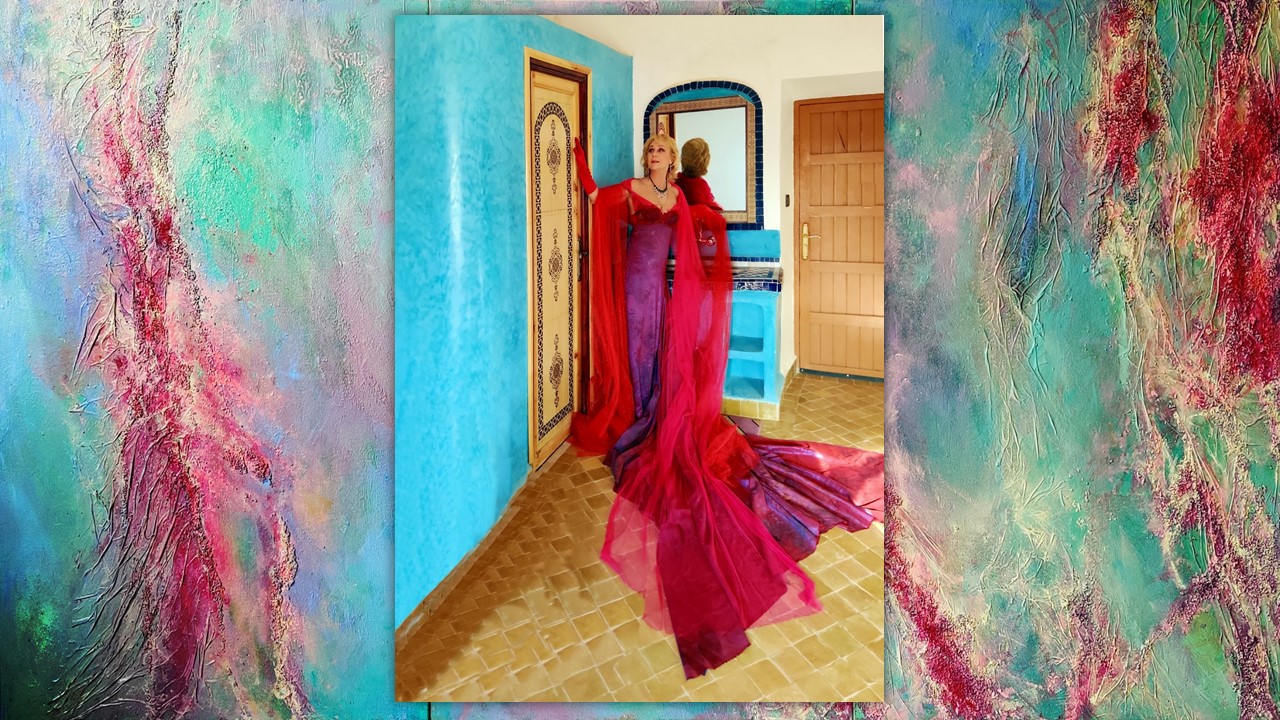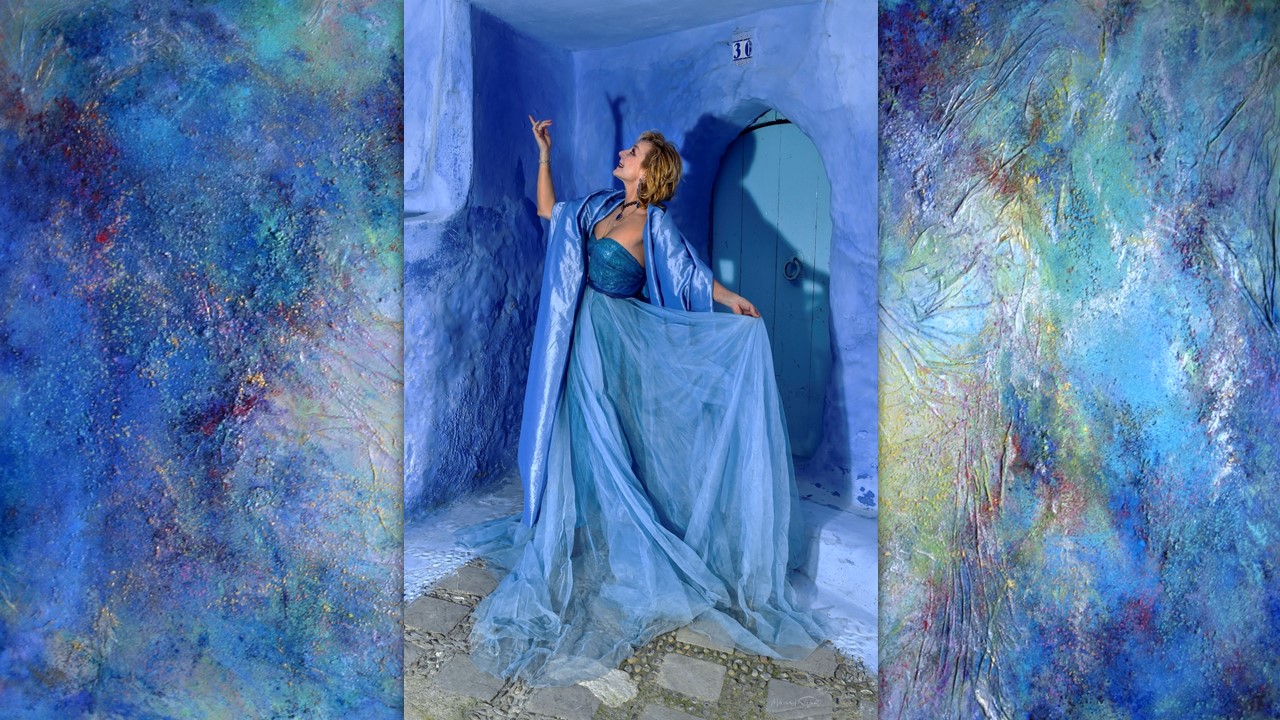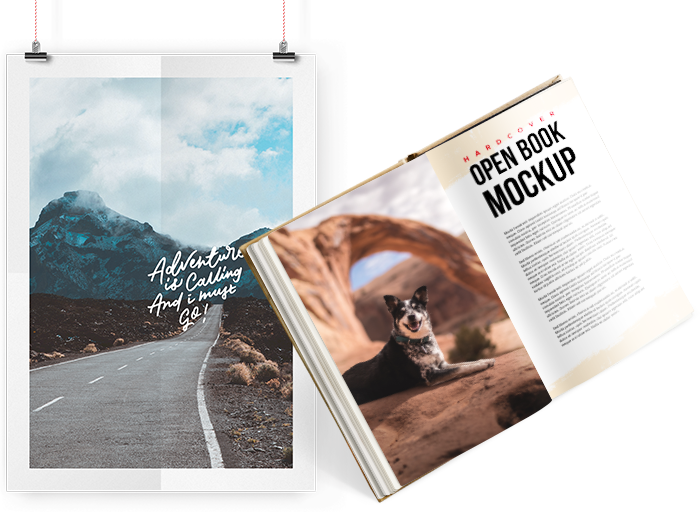16 March 2023
The renowned artist Larissa Noury from France writes on an extraordinary mosaic of astonishing and harmonious landscapes of Morocco and the diversity of art styles of Professor M. Taghzout.
“I opted for movement, light and color, blur effects… All these elements allow me to go towards, to get closer to the visual aspect of a kind of semi-figurative painting. My vision as a visual artist and its influence on my photos is very clear: composition, material, texture and color take precedence over the rest; the connotation is the document, the history (architectural style), the social (traditions and way of life), the objects, in a word The Cultural Heritage of the Country,” said Professor M. Taghzout.
Artist Larissa Noury presents a new film titled MERVEILLES AU MAROC, an extraordinary mosaic of astonishing and harmonious landscapes of Morocco and the diversity of art styles of Professor M. Taghzout.
Artist Larissa Noury writes:
The variety of colors, landscapes, and architecture of Morocco is impressive. It offers an incomparable asset to combine geographical diversity and exciting cultural discoveries. The architectural richness of the medinas of the North, the Atlas Mountains and the mysterious space-times of the desert and the golden dunes of the Sahara, the beauty of the wild Atlantic coast and the contrasts of the villages of the Mediterranean facade form a mosaic extraordinary of astonishing and harmonious landscapes. This diversity of contrasts in the landscapes has been reinforced by the presence of different cultures on the land of Morocco. Perfectly located between Europe and Africa, it offers a palette that has been enriched by cultural and historical particularities from these two poles.
The diversity of styles of arts, cultures and architectures is linked with this geographical originality but also with historical origins. The nomadic peoples of the South build the large traditional tents which are covered with woven strips of wool or animal hair, sewn together. Some tents are white and topped with golden balls, a symbol of authority (Caidales). Berber architecture has always been symbolized by adobe constructions, casbahs (inhabited fortresses) and ksour (fortified villages), agadir (attics-fortresses). These particularly fragile constructions are found in the South, in the Dra, Dadès, Ziz, Todra valleys and are made of rammed earth, a mixture of pebbles and clay with a little straw packed between two planks during construction. In the medinas, historic city centers founded by the Arabs, there are very beautiful creations with particular architecture linked to Islam: mosques, minarets and medrasas.
The medina is the symbol of city life, the houses are piled up against each other, monochrome and closed on the street side, they open onto the multicolored patios, interior spaces and organize the souks, the courtyards, the gardens. Often monumental walls with gates and adobe ramparts, surround the medinas. It should be added that the Spaniards and the Portuguese have brought their touch to the architectural color palette. The Portuguese built fortresses on the coasts, and the Spaniards developed the Andalusian style in northern Morocco.
The photographer Mohammed Taghzout composes like an artist. I met him during the Djerba Dream festival in Tunisia during the summer of 2018. Equipped with his cameras, his only claim is the right to the imagination. His fields of creation are multiple; day and night, only accompanied by his photographic equipment, he makes us discover the landscape and its lights in a unique way.

